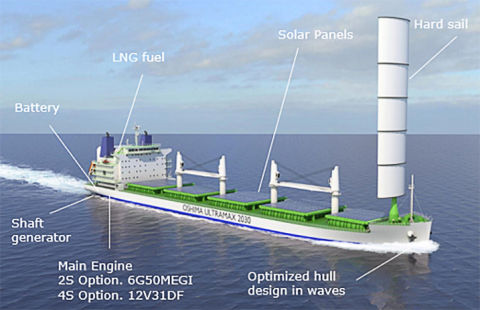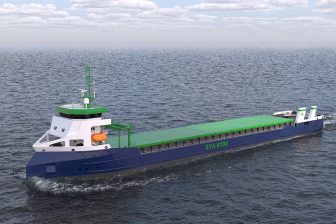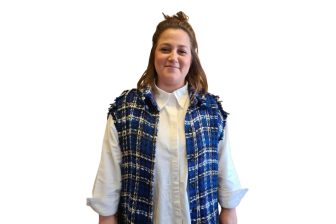
DNV GL and Oshima show new green dry bulk vessel design
DNV GL and Oshima Shipbuilding have signed a long-term strategic cooperation to jointly research and develop new dry bulk vessel designs. The first concept is a geared Ultramax bulk carrier that is 50% more efficient than current models.
Spurred by the IMO strategy to reduce greenhouse gas emissions from ships, the partners aim to continue the strategic cooperation through to 2030, developing and updating a road map towards the IMO zero emissions scenario, which will be gradually implemented through annual joint industry projects, where other partners will be invited to join, DNV GL states.
The first delivery resulting from this cooperation is the “Oshima Ultramax 2030”. According to the partners, it is one of the most efficient geared dry bulk vessels to date. It is designed to maximize operational performance while minimizing emissions. The vessel is powered by LNG, has an optimized hull shape and uses a sail to generate extra propulsion. The design also offers ultra-low emissions in port by using solar panels and a battery to cover the hotel load during waiting times and port operations. Together, these measures result in a 50% reduction in EEDI, which is a measurement of a ship’s efficiency.
“To help the industry meet the ambitious GHG reduction targets set by the IMO, the industry needs to come together to advance ship design, taking advantage of both existing and new technologies,” said Trond Hodne, Director of Sales & Marketing at DNV GL. “This partnership shows how much can come of this approach. The design halves the EEDI of comparable vessels and sets a new standard for low emission bulk carriers.”
Oshima and DNV GL have already had a close cooperation for years, resulting in close to 200 ships delivered or on order from Oshima to DNV GL class. “With this strategic agreement we want to extend this cooperation even further,” said Eiichi Hiraga, President of Oshima Shipbuilding.




